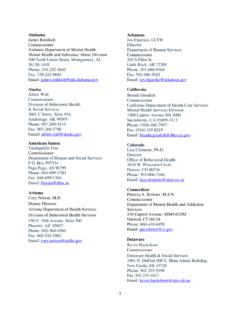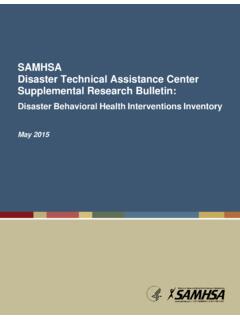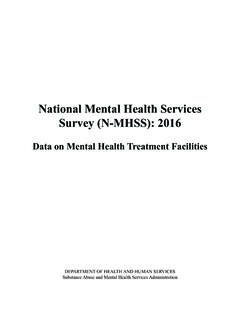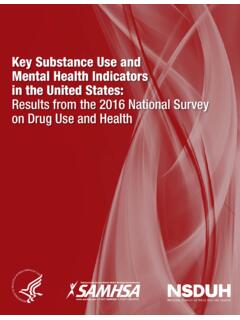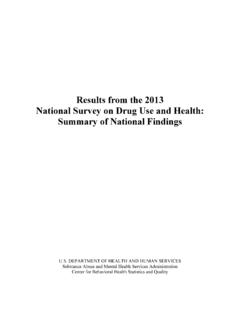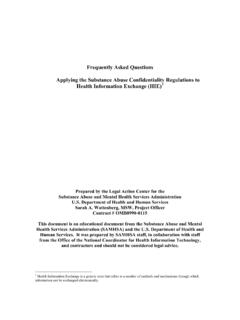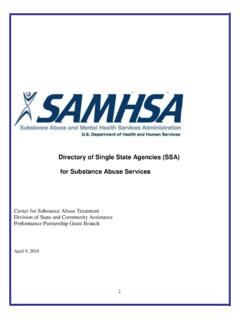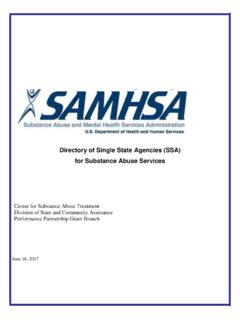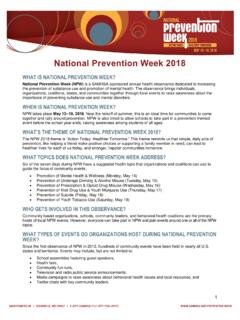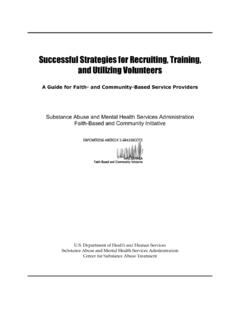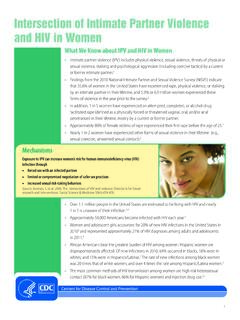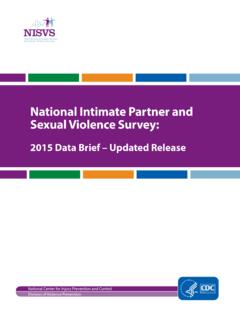Transcription of Intimate Partner Violence and Child Abuse Considerations ...
1 Intimate Partner Violence and Child Abuse Considerations During COVID-19 As the COVID-19 pandemic continues, Americans are required to stay home to protect themselves and their communities. However, the home may not be safe for many families who experience domestic Violence , which may include both Intimate partners and children. COVID-19 has caused major economic devastation, disconnected many from community resources and support systems, and created widespread uncertainty and panic. Such conditions may stimulate Violence in families where it didn t exist before and worsen situations in homes where mistreatment and Violence has been a problem.
2 Violence in the home has an overall cost to society, leading to potentially adverse physical and mental health outcomes, including a higher risk of chronic disease, substance use, depression, post-traumatic stress disorder, and risky sexual Further, victims of domestic Violence including Intimate Partner Abuse and Child Abuse are at great risk for injuries including death. Intimate Partner Violence According to CDC, approximately 1 in 4 women and nearly 1 in 10 men have experienced Intimate Partner Violence (IPV) sexual Violence , physical Violence , and/or stalking by an Intimate Partner during their lifetime. Moreover, more than 43 million women and 38 million men experienced psychological aggression by an Intimate Partner in their Approximately 41% of female IPV survivors and 14% of male IPV survivors experience some form of physical injury related to IPV.
3 It is important to acknowledge that IPV can extend beyond physical injury and result in death. Data from crime reports suggest that 16% (about 1 in 6) of homicide 1 Preventing Multiple Forms of Violence : A Strategic Vision for Connecting the Dots. (2016). Atlanta, GA: National Center for Injury Prevention and Control, Centers for Disease Control and Prevention. 2 Smith, S. G., Zhang, X., Basile, , Merrick, , Wang, J., Kresnow, M., Chen, J. (2018). The National Intimate Partner and Sexual Violence Survey (NISVS): 2015 Data Brief Updated Release. Atlanta, GA: National Center for Injury Prevention and Control, Centers for Disease Control and Prevention.
4 Victims are killed by an Intimate IPV has been associated with many negative physical and mental health outcomes and health risk behaviors among women of all There is a concern that the numbers experiencing Intimate Partner Violence will dramatically rise in as a result of social distancing and quarantine during COVID-19. Before the pandemic, a survivor or victim could flee a violent situation or file a protective order with the police. For many, such options aren t easily available right now. A stay-at-home order can force victims to stay in a dangerous Child Abuse and Neglect CDC reports that at least 1 in 7 children have experienced Child Abuse and/or neglect in the past year and in 2018, nearly 1,770 children died of Abuse and neglect in the United States.
5 Rates of Child Abuse and neglect are five times higher for children in families with low socio-economic status compared to children in families with higher socio-economic In the US, the total lifetime economic burden associated with Child Abuse and neglect was approximately $428 billion in Child Abuse and neglect can have a tremendous impact on lifelong health and wellbeing if left untreated. For example, exposure to Violence in childhood increases the risks of injury, future Violence victimization and perpetration, substance Abuse , sexually transmitted infections, delayed brain development, lower educational attainment, and limited employment 3 Breiding, M.
6 J., Chen J., & Black, M. C. (2014). Intimate Partner Violence in the United States 2010. Atlanta, GA: National Center for Injury Prevention and Control, Centers for Disease Control and Prevention. 4 J Womens Health (Larchmt). 2015 Jan 1; 24(1): 62 79. doi: 5 APA (2020) How COVID-19 may increase domestic Violence and Child Abuse Retrieved at: 6 Department of Health & Human Services, Administration for Children and Families, Administration on Children, Youth and Families, Children s Bureau. (2020). Child Maltreatment 2018. Available from 7 Peterson C, Florence C, Klevens J. The economic burden of Child maltreatment in the United States, 2015.
7 Child Abuse & neglect. 2018 Dec 1;86:178-83. 8 Fortson B, Klevens J, Merrick M, Gilbert L, Alexander S. (2016). Preventing Child Abuse and Neglect: A Technical Package for Policy, Norm, and Programmatic Activities. Atlanta, GA: National Center for Injury Prevention and Control, Centers for Disease Control and Prevention. Children are specifically vulnerable to Abuse during COVID-19. Research shows that increased stress levels among parents is often a major predictor of physical Abuse and neglect of children. Stressed parents may be more likely to respond to their children s anxious behaviors or demands in aggressive or abusive ways. The support systems that many at-risk parents rely on, such as extended family, Child care and schools, religious groups and other community organizations, are no longer available in many areas due to the stay-at-home orders.
8 Child protection agencies are experiencing strained resources with fewer workers available, making them unable to conduct home visits in areas with stay-at-home orders. Since children are not going to school, teachers and school counselors are unable to witness the signs of Abuse and report to the proper authorities. Also, many at-risk families may not have access to the technology children needed to stay connected with friends and extended We must take action to alert victims of Abuse that there is help available. We must work with law enforcement and other state and local personnel to understand that stay-at-home orders need to be relaxed when the home is unsafe.
9 Schools should continue to offer virtual counseling or telephone check-ins whenever possible. The hotel and hospitality industry have played a large role in many jurisdictions helping to house the homeless or healthcare practitioners; businesses and localities must also remember the vulnerable population affected by domestic Violence who can also benefit from these services. During this time, we must also ensure that healthcare practitioners are screening patients for Intimate Partner Violence and Child Abuse . To help families and communities address Intimate Partner Violence and Child Abuse health concerns, please see the resources below: SAMHSA Resources: 9 APA (2020) How COVID-19 may increase domestic Violence and Child Abuse Retrieved at: Addiction Technology Transfer Center (ATTC) offers a session on Addiction Recovery and Intimate Violence : This is a one hour self-paced course and is based on industry awareness about Intimate Partner Violence (IPV).
10 The National Hispanic and Latino ATTC recorded a webinar this February on the Intersection of Domestic Violence or Intimate Partner Violence and Addiction - Intimate Substance Abuse Treatment and Domestic Violence - Quick Guide for Clinicians Based on TIP 25 - The National Center on Domestic Violence , Trauma & Mental Health, a SAMHSA Partner , recently released: Supporting Survivors Access to Substance Use Disorder and Mental Health Services During the COVID-19 Emergency Other non-SAMHSA Resources: National Domestic Violence Hotline Staying Safe During COVID-19 Phone number: 1-800-799-SAFE (7233) The National Network to Eliminate Domestic Violence Resources on the Response to the Coronavirus (COVID-19) Department of Justice, Office of Women s Health Local Resources on Domestic Violence Prevent Child Abuse America Coronavirus Resources & Tips for Parents, Children & Others Stronghearts Native Helpline 1-844-762-8483
